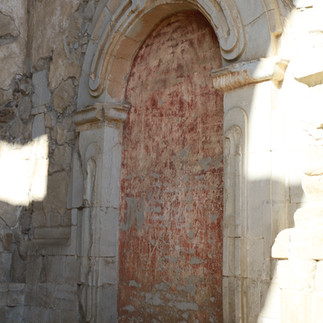When the Swallows Come Back to Capistrano: San Juan Capistrano
Updated: Sep 28, 2024

Sixteen years ago, a fifteen-year-old Marisa went to California with her family for a wedding. We visited San Juan Capistrano’ Mission. I vaguely remember going through the convent and ruins of the chapel and its beautiful gardens. Present day-actually a month ago, my mom, sister, and I were in the state to visit for a meetup group. Before meeting up with the Carpenters fan groups in Downey, we revisited San Juan Capistrano’s Mission.
On that day, there was an event going on where tables were being set up. On a side unrelated note, I did learn something interesting. While I was paying admission, the receptionist asked if I was a photographer with a company. I said “no” and said I did not have to worry. It turns out if I had been an event photographer, I would have had to pay a fee. I’m always learning something new every day.
The mission, named after Saint John of Capistrano, was first built by the Spanish in 1776. It was the seventh mission to be constructed in California. Prior to being built, the land that San Juan Capistrano sits on was home to 550 Indigenous Acjachemen.
Over the years, the mission, thanks to its picturesque gardens, has received the title of “The Jewel of California.”
In the early days, missions also acted as vineyards, and San Juan Capistrano was no exception. The Mission produced wine and olive oil. Today, artifacts of wine-making tools the missionaries used can be found in the garden.
The dormitories are preserved to show daily life on the Mission.
For many years to come for the mission, tragedy would strike the place.
The chapel began to shake on December 8th, 1812, during a mass for the Feast Day of the Immaculate Conception of the Blessed Virgin. It is common knowledge that California is no stranger to earthquakes and 212 years ago, it was no different. That morning, the chapel collapsed and took thirty-nine lives (thirty-one of whom were women) with it. The chapel's ruins remain to this day from the earthquake, with a small bronze diagram of what it used to look like. There is a local legend of a girl named Magdalen, who was supposedly a victim of the earthquake and was spotted. The story goes as follows: a sixteen-year-old girl named Magdalen fell in love with a fresco artist who rolled into town one day. Her father, a mission soldier, disapproved of her love, stating she must marry a man from her social class. She went against her father’s demand and kept seeing the artist. When he caught wind, he punished her by having her confess her sin to the mission and walk down the aisle with a penitent candle during the congregation. Unfortunately, things would turn tragic. That day, the 1812 earthquake happened. Magdalen did not survive and was found still clutching onto the candle. Her ghost is seen through the remaining window in the church ruins, holding the candle.
In 1818, the mission was taken over by pirates. A French pirate named Hippolyte Bouchard ordered his crew to ransack the mission for supplies.
The mission and other missions in California began to decline in 1821, when California joined the United States and gained independence from Spain.
Smallpox would also spread through the mission, wiping out the remaining indigenous people.
Over the years, the mission began to deteriorate, and it was not until the 20th century that people began to take an interest in preserving it. Much of the mission was cleaned up and restored.
The mission continues to draw in visitors for its splendid beauty and history. Not only does the area draw visitors, but our aviation friends as well. The legend goes that Father St. John O’Sullivan spotted a shopkeeper destroying a cliff swallow’s nest. He took pity on the swallows, realizing they had nowhere to go, and told the swallows to come to the mission as he would shelter them. The Cliff Swallows would take up roost to raise their young. Their residency has also inspired the songwriter Leon Rene, who wrote the song When the Swallows Come Back to Capistrano. The mission dedicated a glass-off room in his honor. His family donated the furniture in it. Like the swallows, visitors still return to Capistrano.






















コメント